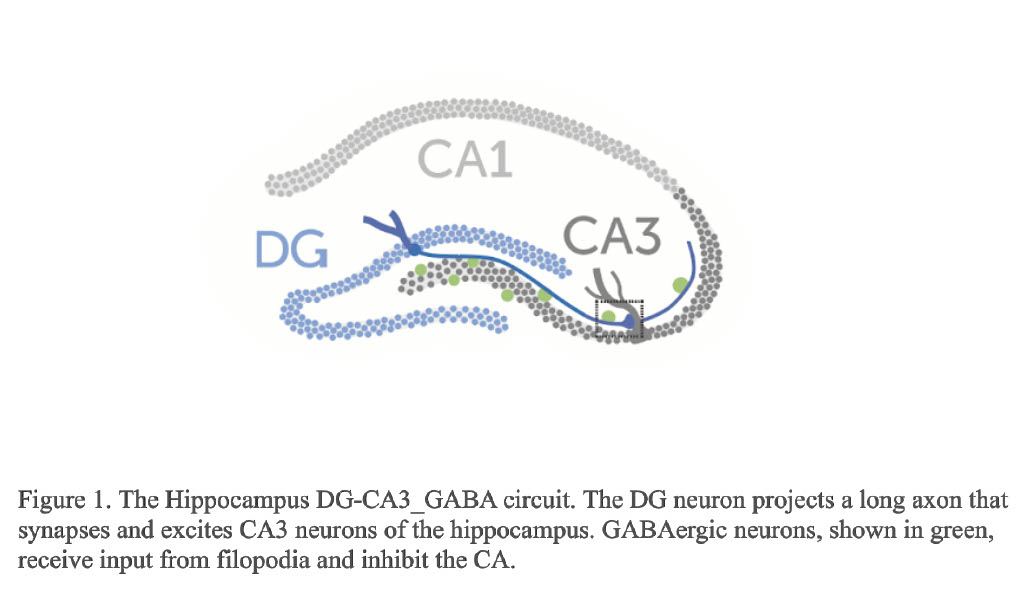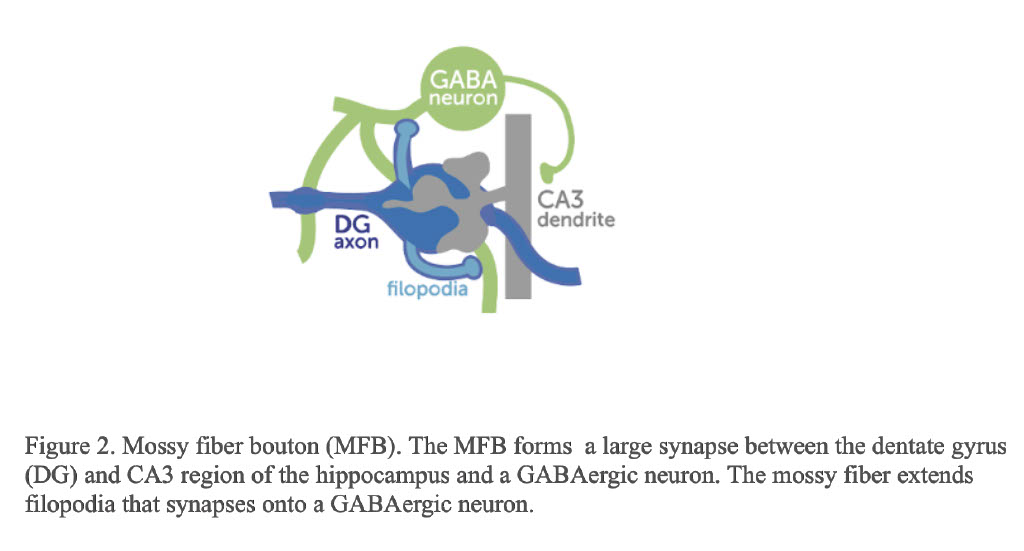School of Medicine
52 The Autism-Associated Gene Kirrel3 in Developed Synapse Maintenance
Olivia Raines; Megan Williams; and Omar Shennib
Faculty Mentor: Megan Williams (Neurobiology, University of Utah)
Kirrel3 is a synaptic cell adhesion protein necessary for the formation of a specific type of synapse in the hippocampus, a brain region that is important for learning and memory. During development, Kirrel3 is expressed in excitatory dentate gyrus (DG) neurons and inhibitory GABAergic neurons and binds trans-cellularly with itself. This synapse contributes to a neuronal circuit consisting of DG, GABA, and CA3 neurons in the hippocampus (figure 1). Part of this circuitry is a huge synapse between the DG and CA3 called Mossy Fiber Bouton. In the presence of Kirrel3, the mossy fiber bouton extends filopodia to synapse with GABAergic neurons creating a feedforward inhibition loop that allows the regulation of inhibition and excitation communication to the CA3 neurons of the hippocampus. When excited, the filopodia activates the GABAergic neuron to then inhibit the CA3 neuron (figure 2). Previously the Megan William’s lab found that germline Kirrel3 knock-out mice are missing these specific synapses in the hippocampus. These mice also have an increase in neuronal activity in the hippocampus most likely due to the loss of synapses.
Interestingly, mice expressing Kirrel3 during development continue to express it after a synapse is formed. However, it is unknown if Kirrel3 is needed to hold the synapse together after development. I will test this by using an AAV virus containing a Cre recombinase protein to knock out Kirrel3 in adult neurons after synapse formation is complete. After injection, I will use confocal microscopy to image, analyze, and compare the morphology of these synapses. This investigation of Kirrel3 in adult mice will bring us closer to understanding the mechanical role of Kirrel3 in synaptic formation and neuronal connectivity. Moreover, understanding the function of Kirrel3 may be clinically beneficial as variations in Kirrel3 are associated with neurodevelopmental disorders like autism and learning disabilities.



